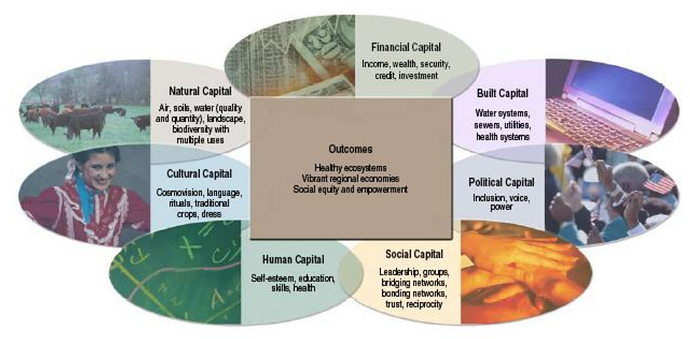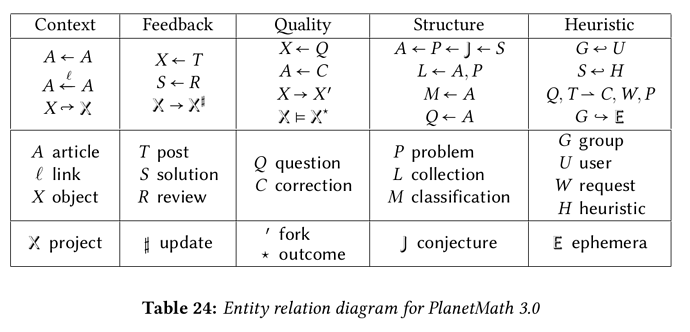I’d like to run through the Roles described on the OGM webpage and see how they match the nascent pattern language that is OGM Workshop Group 1 output.
A. Sensors
Sensors fulfill the primary research function of OGM. The primary responsibility of a sensor is to grow our knowledge base. Consider them similar to market research analysts responsible for key subject areas. They scan the environment and the world, searching for new thoughts, ideas, and insights to bring into the system.
This seems related to Defining Characteristics : Maps of the landscape — insofar as sensors are also like “scouts” or “surveyors”; and furthermore, the map-making project influences the “view” of the landscape.
B. Protectors
Owners of how OGM interfaces with the outside world. Their responsibilities include API’s, IP, access controls, cyber security, membership, etc.
Although the quote above is mostly technically worded, it sounds a lot like Scope of Work : Debug individual and joint activities, insofar as the “scope” of work defines a boundary and the boundary helps protect the organisation (I’m thinking of Stafford Beer’s model of the firm, and Ronald Coase’s). It’s interesting to think of the “debugging” process as a form of immune system, as well, of which the boundary is only one part.
C. Fellows
Investors, leaders, and thought-provokers. To be a Fellow suggests a deeper level of partnership with OGM. These individuals (or organizations) grow and advance the fundamental mechanisms that support OGM. They help provide or procure funding for the pursuit of new projects and help guide thought leadership.
Now this sounds a bit like Values : Practices of stewardship. The “deeper level” of partnership sounds like it may well involve a “stewardship” role. Or, put otherwise, these roles might feed into and sustain the “values” of the organization itself. One keeps in mind that “funding” and “Financial Capital” is only one of seven Community Captials! The “thought leadership” might be along any of the other dimensions. This essay by Joi Ito might be worth reading in connection with these themes.
D. Makers (Builders)
The primary function of the “Makers”, or “Creators” is to create – or shepherd the creation of – tools and services.
Although the link is a bit lose, I wonder if this is connected with Strategic Objectives : Ongoing learning (w/ a shared memory artifact) and unlearning, since the strategic objectives contribute to an articulation of the project, and as such are “tools for thought.” Another thing that the makers make is memory. Am I reaching too much here…?
We are the music makers,
And we are the dreamers of dreams,
Wandering by lone sea-breakers,
And sitting by desolate streams;—
World-losers and world-forsakers,
On whom the pale moon gleams:
Yet we are the movers and shakers
Of the world for ever, it seems.
E. StoryThreaders
The story-tellers of the group seek to make connections across multiple narratives, nodes, ideas, or strings of thought. They find creative ways to introduce these new stories to the global consciousness.
This seems related to Sustainability Model : Develop collective wisdom — as I understand it. (Thanks to @kenhomer, @Jerry, and @Mila for explaining to me what they mean by “story”.) What I’m piecing together is that stories are “sustaining” because they are a kind of ground for mindfulness and discernment. It was also interesting to learn that @maparent that he recently read “After Buddhism” — a book that’s built mostly out of stories.
F. Participants
Users of OGM platform who may be makers, story threaders, protectors, or sensors in their own rights.
This is an exact match for Participants : Maintain sufficient cohesion to generate value. I emphasised the need for “cohesion” and pulling together different resources (similar to the multiple capitals theory mentioned above, or the metaphor of a kombucha-like functionality of the map-makers/scouts mentioned above under Sensors.
G. Sponsors
Members who support OGM in the form of grants, scholarships, sponsorships, time, etc.
This seems related to Core Purpose : Connect the connectors to what they need to thrive as I understood it. People would “sponsor” the project by providing these needed resources.
H. Advisors
Members who offer guidance or advice to OGM. Perhaps more of a steering committee.
I wonder if the steering committee might take charge of the Key Operating Principles and Practices : Online with intention, and in the world with compassion — after all, if they are going to “steer” or “operate” the project, they will need access to such a control system!
Guild Members
Membership in a guild distinguishes those that can be leveraged for guidance, advice, or inventive solutions in a given discipline or practice from other participants. An all-encompassing role, Guild Members are master practitioners of OGM capabilities. They are builders of the product, solution designers, and engagement seekers. Think of Guild Members as SME’s. For example, a developer with extensive experience developing API’s might be a guild member of an API-related guild. Similarly, a story-threader may be a member of a related guild. Furthermore, guild membership is not mutually exclusive. That is to say, a story-threader can belong to a “Builder” guild or a “Story-Threader” guild.
Personally, I’m a bit less charmed by this “guild” language and have suggested “working groups” as a more down-to-earth alternative term. That said, maybe the guild term means something important that I’m not grasping (as was the case with “story” until it was explained to me). However, the other point to make at this juncture is that I have run out of link targets. So, in the words of Pierre-Simon Laplace: je n’avais pas besoin de cette hypothèse.






